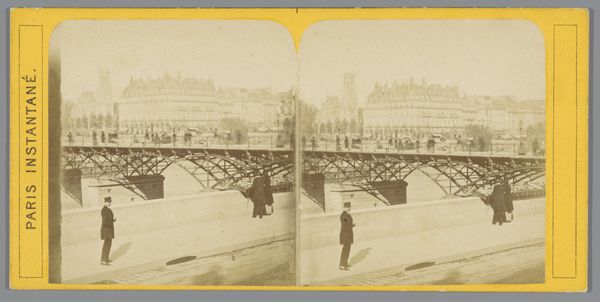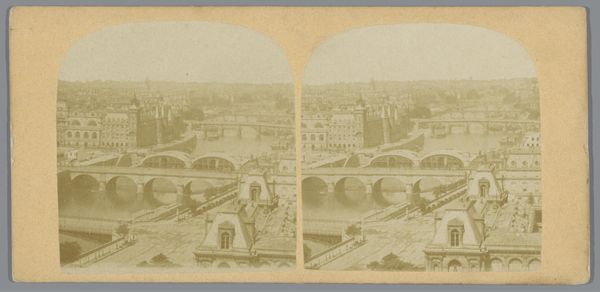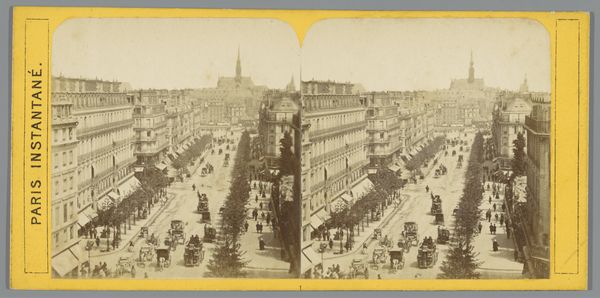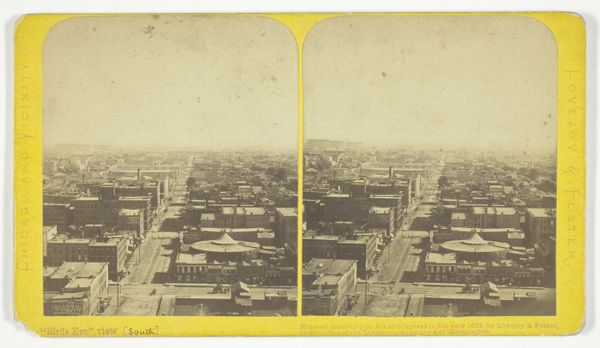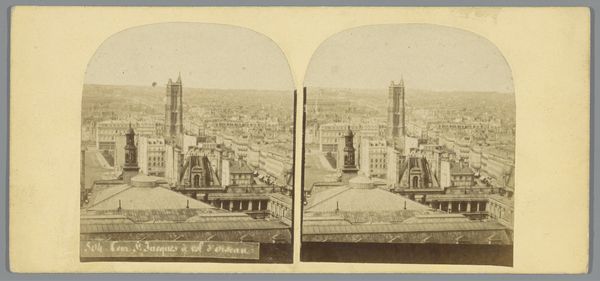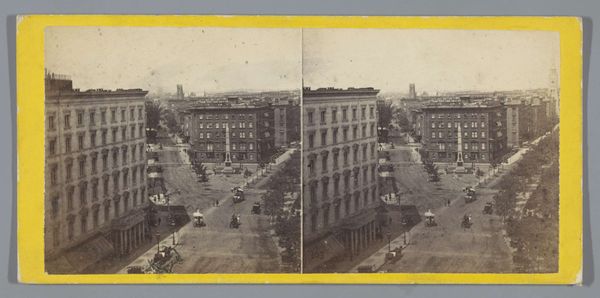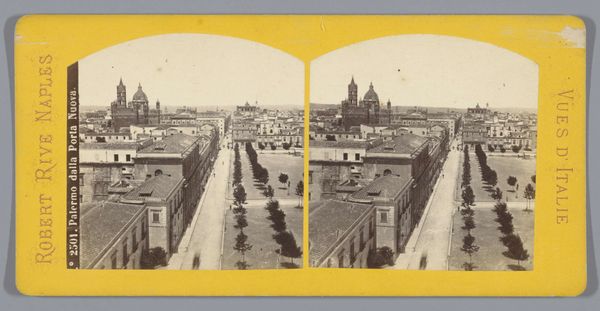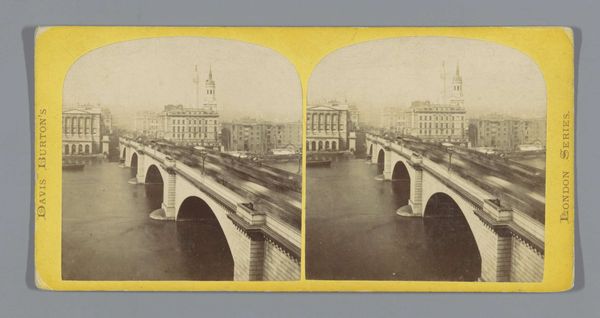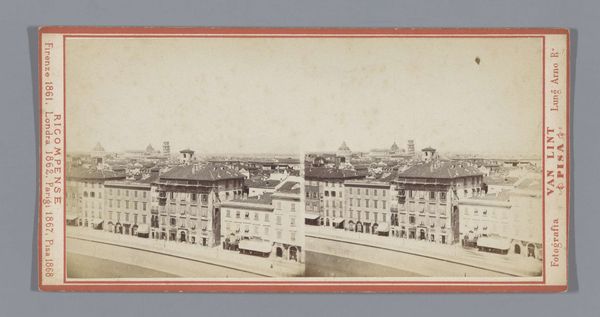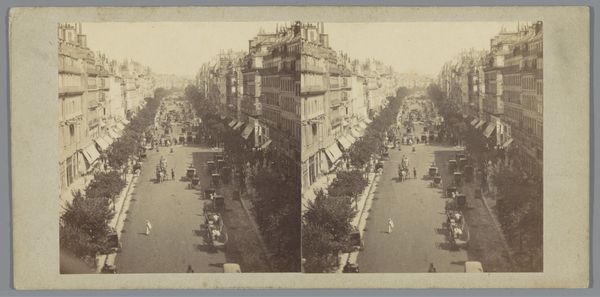
silver, print, photography
#
silver
# print
#
impressionism
#
landscape
#
photography
#
cityscape
Dimensions: 7.6 × 6.8 cm (each image); 8.2 × 17.2 cm (card)
Copyright: Public Domain
Curator: What strikes me immediately about this anonymous photograph, "Panorama of Paris, Taken from the Louvre," circa 1874, is the sheer density of detail captured in a silver print. It really pulls you in. Editor: I'm captivated by the layers of urban life visible here. It feels very imposing and highlights class divisions. What statements can we glean about Parisian society by understanding how urban landscapes are represented through technological advances such as this? Curator: Well, this stereo card would have offered an accessible three-dimensional experience of Paris to a wider audience. I wonder how many purchased this as a status symbol, evidence of access, and, of course, the technological innovations that are beginning to explode across the world stage at this moment. The elevated viewpoint suggests privilege, but the mass-produced nature democratizes the experience. Editor: Absolutely, and the panoramic view emphasizes the expansion and modernization of Paris under Haussmann, but with a stark absence of marginalized communities within this very visual representation. The cityscape feels almost sterile and meticulously planned to control any social chaos or revolution bubbling underneath the surface. I'd argue we need to interrogate whose Paris is truly on display. What power is behind the perspective, framing, and composition? Curator: Interesting point. Looking closer, the architectural details—bridges, buildings—act as symbols of progress, aspiration and even grandeur. Editor: It certainly seems a very sterile portrait of modernity when it is understood that modernity doesn't belong to everybody. What do you make of that muted color palette in light of class tension? Curator: The tones evoke a kind of nostalgia, framing these themes of modernity. The soft sepia, inherent in the printing process of the time, transforms steel and stone into something a bit wistful. Ultimately it asks questions that each of us must examine when we think about how modernity belongs to each of us—a kind of photographic poetry. Editor: A melancholic lens through which to reflect upon access and the visual language used to exclude people—perhaps not intentionally, but undeniably, from a photographic record of progress and an imagined future. It's been thought-provoking!
Comments
No comments
Be the first to comment and join the conversation on the ultimate creative platform.
